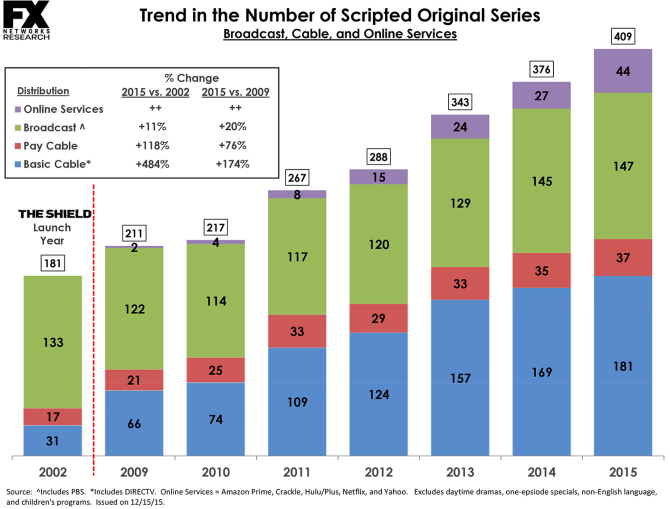In his 1979 book, “Breaking the Magic Spell,” Jack Zipes shared the story of Priscilla Denby, a researcher who spent an entire day watching TV in 1969 logging all the traditional folklore and fairy tale items featured in shows and commercials. In 1969 Denby logged 101 themes in one day of television.
In 2016 we live in a time described (sometime jokingly, other times seriously) as Peak TV. As more channels and online content providers attempt to stake out ground and cement their place in the media landscape, more and more television shows are being produced. According to research done in 2015 from the television network FX, there has been an unprecedented rise in programming in the last few years.
One can only imagine what a study like Priscilla Denby’s would look like in 2016. In 1969 there were only a handful of channels and now there are hundreds. With more commercials and shows than ever before fairy tales have more opportunities than ever to show up on the small screen. In the introduction to “Channeling Wonder,” a book exploring the fairy tale’s role in the age of Peak TV, Pauline Greenhill and Jill Rudy explain, “television seriality works especially well for establishing the horizon of expectation while keying on a fluid relationship of fantasy and reality. Wonder invokes and responds to this fluid relationship, helping to illuminate fairy tale’s persistence in, and even conscription of, new media.”
The digital age and the new media its brought have created an ideal environment for the fairy tale to adapt. The call Jack Zipes made in “Breaking the Magic Spell” is more relevant than ever as fairy tales find new places in commercials and television programs. According to Zipes, to counter the “corporate inundation of our imagination, the familiar fairy tales must be made strange to us again if we are to respond to the unique images of our own imagination and the possible utopian elements they may contain.”
While Zipes was speaking specifically against mind-warping TV advertisements featuring fairy tales, there are still those rare commercials that genuinely make the tales strange to us again by commenting on the genre or showing us their place in the modern world. To close out this series let’s examine one last commercial that manages to comment on online journalism, social media mobs, police brutality and militarization, privacy rights, conspiracy theories, insurance fraud, and the financial crisis. And the framing mechanism for all of this? The familiar tale of the Three Little Pigs.
